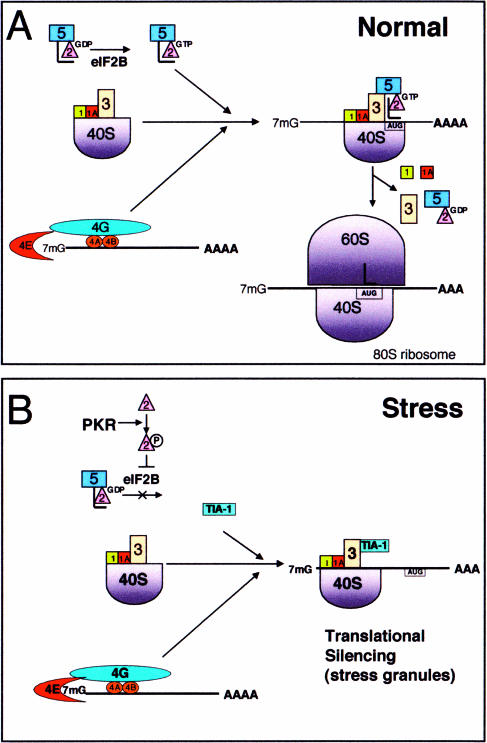Fig. 1.
Translational initiation in the absence or presence of stress. (A) Normal: when the eukaryotic translation initiation factor 2 (eIF2)–guanosine triphosphate (GTP)–transfer ribonucleic acid for methionine (tRNAMet) ternary complex is available, a canonical 48S preinitiation complex is assembled at the 5′ end of capped transcripts and scanning begins. Upon recognition of the initiation codon by the anticodon of tRNAMet, eIF5 promotes GTP hydrolysis, and early initiation factors are displaced by the 60S ribosomal subunit. (B) In stressed cells the phosphorylation of eIF2α prevents GDP-GTP exchange by eIF2B, which lowers the effective concentration of eIF2-GTP-tRNAMet. Under these conditions, TIA-1 is included in a noncanonical preinitiation complex that is translationally silent. TIA-1 self-aggregation then promotes the accumulation of these complexes at discrete cytoplasmic foci known as stress granules

